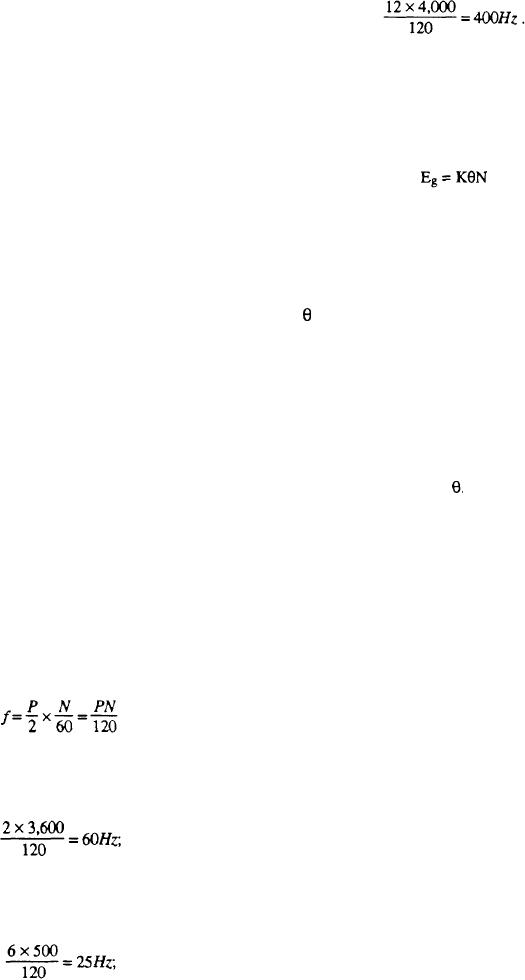
with two line wires and their potential coils connected
between these line wires and the common, or third, wire
that does not contain the current coils. The total true
power is equal to the algebraic sum of the two wattmeter
GENERATED VOLTAGE
readings. If one meter reads backward, its potential coil
connections are first reversed to make the meter read
upscale, and the total true power is then equal to the
Generated voltage of a generator is expressed by the
difference in the two wattmeter readings. If the load
formula:
power factor is less than 0.5 and the loads are balanced,
the total true power is equal to the difference in the two
wattmeter readings. If the load power factor is 0.5, one
Where:
meter indicates the total true power and the other
indicates zero. If the load power factor is above 0.5, the
Eg is generated voltage
total true power is equal to the sum of the two wattmeter
K is a constant determined by the construction of
readings.
the generator
is the strength of the rotating magnetic field
FREQUENCY
N is the synchronous speed
The frequency of the ac generator voltage depends
Its impractical to vary the frequency of power
upon the speed of rotation of the rotor and the number
supplied throughout the ship in order to regulate the
of poles. The faster the speed the higher the frequency.
voltage generated, and the constant can't be changed
Conversely, the lower the speed, the lower the
once the machine has been designed and built; therefore,
frequency. The more poles there are on the rotor, the
the generated voltage of an ac generator is controlled by
higher the frequency is for a given speed. When a rotor
varying the dc excitation voltage applied to the rotor
has rotated through an angle so that two adjacent rotor
field winding thus varying
poles (a north and a south pole) have passed one
winding, the voltage induced in that winding will have
GENERATOR CHARACTERISTICS
modulated through one complete cycle. For a given
frequency, the more pairs of poles, the lower the
speed of rotation. A two-pole generator rotates at twice
When the load on a generator is changed, the
the speed of a four-pole generator for the same
terminal voltage varies with the load. The amount of
frequency of generated voltage. The frequency of the
variation depends on the design of the generator and the
generator in Hz (cycles per second) is related to the
power factor of the load. With a load having a lagging
number of poles and the speed as expressed by the
power factor, the drop in terminal voltage with increased
equation
load is greater than for unity power factor. With a load
having a leading power factor, the terminal voltage tends
to rise. The causes of a change in terminal voltage with
load change are:
where P is the number of poles and N the speed in rpm.
armature resistance,
For example, a two-pole, 3,600-rpm generator has a
frequency of
armature reactance, and
armature reaction.
Armature Resistance
a four-pole 1,800-rpm generator has the same
frequency; a six-pole, 500-rpm generator has a
frequency of
When current flows through a generator armature
winding, there is an IR drop due to the resistance of the
winding. This drop increases with load, and the
terminal voltage is reduced. The armature resistance
drop is small because the resistance is low.
and a 12-pole, 4,000-rpm generator has a frequency of
3-22

